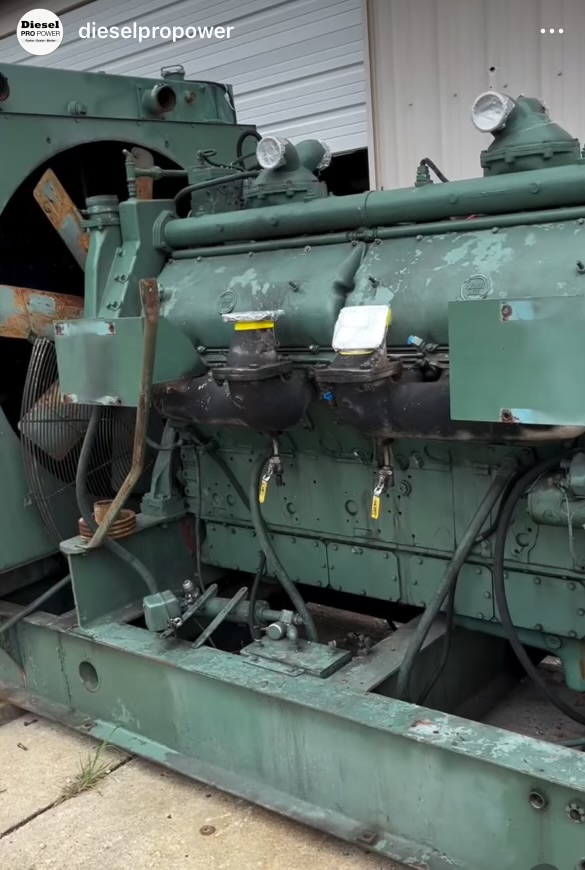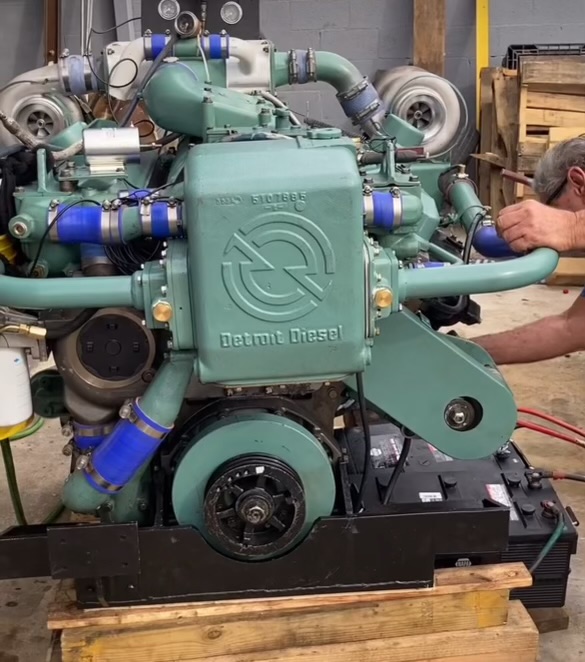November 7, 2024
Key Functions For The Cylinder Head In A Detroit Diesel 149 Engine: Housing Exhaust Valves, Fuel Injectors, and Cooling Systems
Key Functions of the Cylinder Head
Common Issues: Addressing Wear, Valve Clearance, and Cylinder Head Replacement In The Detroit Diesel 149 Series Engine
Wear on Exhaust Valves and Seats
Maintaining Proper Valve Clearance
Injector Wear and Carbon Buildup
Cooling Passage Blockages
Cylinder Head Cracks and Warping
Head Gasket Failure For Detroit Diesel 149 Series Engines (8V149, 12V149, 16V149)
Read More
November 7, 2024
Structure and Role: The Detroit Diesel 149 Engine’s Main Frame
Heavy-Duty Cylinder Block Construction
Housing and Support for Critical Components
Integrated Cooling and Lubrication Systems
Structural Integrity and Load Distribution
Maintenance Tips: Ensuring Structural Integrity and Performance for Your Detroit Diesel 149 Cylinder Block
Inspecting for Cracks and Fractures
Checking Bearing Caps for Wear
Monitoring Bolt Torque and Thread Condition
Torque Specs By Component
Thread Size
Torque (lb-ft)
Torque (N·m)
Cleaning Cooling and Lubrication Passages
Ensuring Surface Flatness
Cleaning and Testing: Maintaining Optimal Condition of the Cylinder Block
Solvent Baths for Thorough Cleaning
Process:
Post-Bath Scrubbing:
Benefits:
Steam Cleaning to Clear Residual Buildup
Pressure Testing to Detect Leaks and Weaknesses
Magnetic Particle Inspection (MPI) for Crack Detection
Rust Prevention and Protective Coatings
Read More
November 6, 2024
Clean Workspace: Importance of a Clean, Organized Area
Protection of Sensitive Components:
Organized Surfaces
Regular Cleaning Routines
Storage of Parts and Supplies
Contamination Prevention
Tool Preparation: Recommendations for Quick, Organized Access
Read More
November 6, 2024
Battery Disconnect: Precautions to Avoid Accidental Starting
Complete Power Isolation
Use of Lockout-Tagout (LOTO)
Discharge Stored Electrical Energy
Disconnecting Additional Power Sources
Conclusion
Proper Lifting Techniques: Securing Heavy Components Correctly
1. Using Engine Lifter Brackets as Recommended
2. Choosing the Right Lifting Equipment
3. Securing Components Before Lifting
4. Avoiding Manual Lifting of Heavy Parts
5. Team Lifting for Medium-Weight Components
6. Ensuring Workplace Safety
Conclusion
Conclusion Of Engine Safety For Detroit Diesel 149 Series Engines (8V149, 12V149, 16V49)
Read More
November 6, 2024
The Origins of Detroit Diesel and Its Impact on Marine Applications
Detroit Diesel’s Engine Series and Marine Success

71 Series:
53 Series:
92 Series:
149 Series:
Key Advantages for the Marine Industry
Two-Stroke Diesel Technology: Why It Was Ahead of Its Time

The Enduring Legacy of Two-Stroke Engines in Marine Applications
Read More
November 6, 2024
Protective Gear Gear For Detroit Diesel 149 Series Engines (8V149, 12V149, 16V149)
Eye Protection:
Gloves and Hand Protection:
Hearing Protection:
Protective Clothing and Footwear:
Cautions With Moving Parts In Detroit Diesel 149 Series Engines (8V149, 12V149, 16V149)
Engine Off and Battery Disconnected:
Avoiding Loose Clothing and Jewelry:
Using Guards and Shields:
Chemical Handling For Detroit Diesel 149 Series Engines (8V149, 12V149, 16V149)
Proper Ventilation:
Handling Solvents Safely:
Storing and Disposing of Chemicals:
Avoiding Skin Contact and Ingestion:
Read More




 Free US Calls: 1-888-433-4735
Free US Calls: 1-888-433-4735 International: 305-545-5588
International: 305-545-5588






